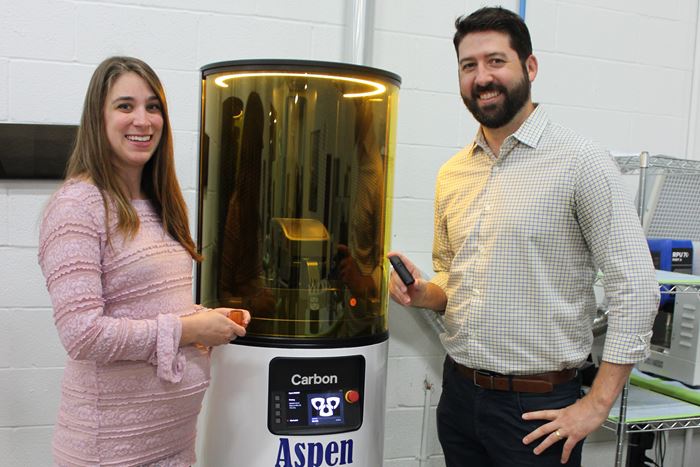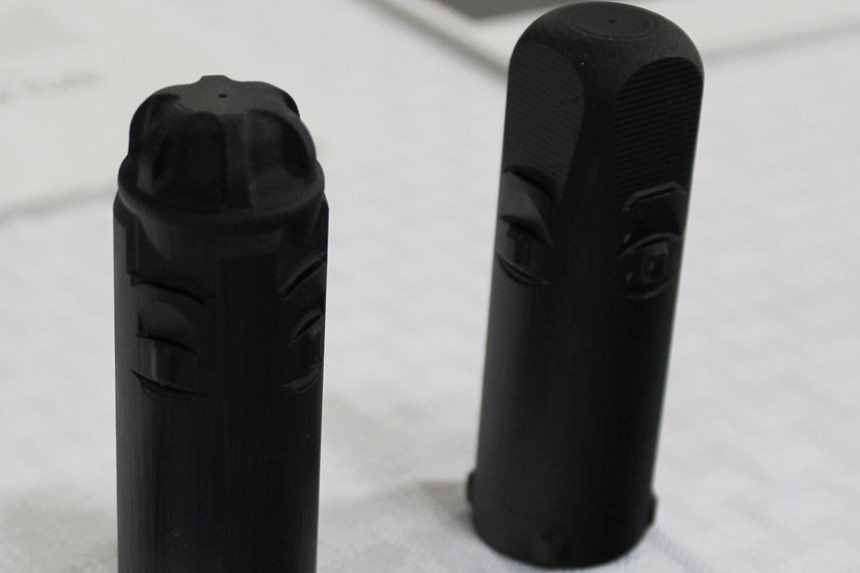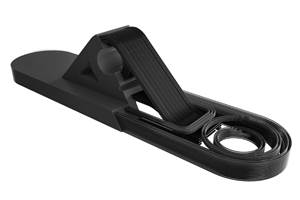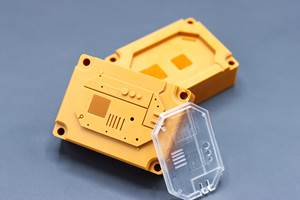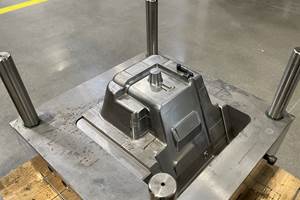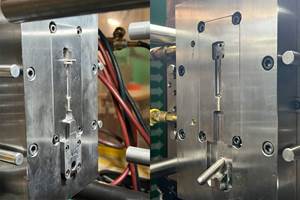How a Prototyping Company Became a Production Company with 3D Printing
After two decades of rapid prototyping with 3D printing, The Technology House is now leveraging this process for production.
The Technology House (TTH) is a company that knows 3D printing. The Streetsboro, Ohio, business has been 3D printing with stereolithography since its launch more than 20 years ago as a product development firm. Over the years founder Chip Gear and his team have leveraged SLA to quickly and flexibly produce prototypes, master molds for urethane casting, tooling and more.
But until recently, TTH never saw 3D printing as a viable option for manufacturing end-use production parts. Its SLA printers produced parts with fine detail and good surface finish, but brittle material properties. The slow speed and limited materials available for SLA kept 3D printing firmly in the early stages of the product lifecycle at TTH, even as it added machining and injection molding capability to pursue production work. But with the addition of Digital Light Synthesis (DLS) printers and auxiliary equipment from Carbon, 3D printing of parts at production scales has become a full reality for the Ohio business.
The Technology House began working with Carbon as a beta tester in 2014, and is now part of the company’s Production Partner Network. TTH currently has three Carbon M1 and two M2 DLS 3D printers in-house, provided through Carbon’s subscription service rather than owned outright. It is also equipped with a Smart Part Washer from Carbon for automated cleaning, and a meter, mix, dispense (MMD) unit for dispensing resin. Together, the printers, washing unit and MMD form a “SpeedCell” system—a concept of interconnected equipment introduced by Carbon in 2017. (Find more on Carbon’s business model and technology in this article.)
Similar to stereolithography printers, Carbon’s DLS machines use UV light to cure liquid resin and build up a part. But compared to the stereolithography equipment still in use at TTH, Carbon’s system offers a number of advantages that make it viable for production applications:
- Speed. A part that takes several hours with another process might take only 10 minutes to print with DLS. The Carbon printers are fast, but their speed can be deceiving; most resin parts require a thermal postcure after printing that can last as long as 13 hours. Still, the savings in time and cost are considerable; parts can be delivered within a week, no tooling required.
- Part characteristics. The DLS printers rely on Continuous Liquid Interface Production (CLIP), a process that enables the build platform to rise continuously during the print rather than stopping after each layer. As a result, DLS parts lack the layer lines common to 3D-printed parts, reducing or eliminating the need for finishing. According to Carbon, they are also watertight and isotropic, having the same strength in all directions.
- Materials. Production-capable materials were a key reason that The Technology House chose to partner with Carbon. The company’s materials catalog today includes more than 15 materials ranging from rigid polyurethanes to flexible elastomers and even some biocompatible materials. The range and durability of the urethane materials available give these printers a clear edge for production over TTH’s existing SLA equipment.
- Automation. 3D printing still involves a fair amount of human involvement, but the SpeedCell offers a few features that help take the burden away from operators. One is integration with a meter, mix, dispense (MMD) unit that precisely weighs out the resin needed to fill each printer’s reservoir, reducing the time for this step from 25 minutes of human labor to just 5. Another labor-saving component is the Smart Part Washer, which helped TTH solve its bottleneck with manual cleaning. Completed build platforms can be loaded into this washer and cleaned of excess resin in less than 10 minutes.
The SpeedCell system has allowed The Technology House to reconsider 3D printing’s capabilities and use cases. While prototyping is still a common application on these machines, there is a trend toward customers pursuing production on this platform. “A customer might print between one and 10 parts at first, then order 50 to 100, and then thousands,” says Greg Cebular, vice president of sales and management. TTH is currently capable of turning out about 1,500 parts per day with its SpeedCell setup.
But the advantage for TTH and its customers is not just the ability to print end-use parts; it’s also the ability to offer an intermediate step between prototyping and injection molding. “3D printing allows us to pursue a ‘dual path’ toward production,” Cebular says. The technology is a way to manufacture parts quickly while waiting for tooling, or before investing in tooling while proving out a new product the market.
Related Content
Additive Fusion Technology Optimizes Composite Structures for Demanding Applications
9T Labs continues to enhance the efficiency of its technology, which produces composite parts with intentionally oriented fibers.
Read MoreMake Every Shot Count: Mold Simulation Maximizes Functional Parts From Printed Tooling
If a printed tool only has a finite number of shots in it, why waste any of them on process development?
Read MoreDaimler, OMIC Evaluate Wire-Fed DED for Moldmaking
3D printing a core and cavity on machine from Gefertec, followed by machining, allowed for a complete mold tool to be produced in three days.
Read More3D Printing of Injection Molds Flows in a New Direction
Hybrids of additive manufacturing and CNC machining can shorten tooling turnaround times.
Read MoreRead Next
For PLASTICS' CEO Seaholm, NPE to Shine Light on Sustainability Successes
With advocacy, communication and sustainability as three main pillars, Seaholm leads a trade association to NPE that ‘is more active today than we have ever been.’
Read MoreMaking the Circular Economy a Reality
Driven by brand owner demands and new worldwide legislation, the entire supply chain is working toward the shift to circularity, with some evidence the circular economy has already begun.
Read MoreRecycling Partners Collaborate to Eliminate Production Scrap Waste at NPE2024
A collaboration between show organizer PLASTICS, recycler CPR and size reduction experts WEIMA and Conair will seek to recover and recycle 100% of the parts produced at the show.
Read More
.jpg;width=70;height=70;mode=crop)
